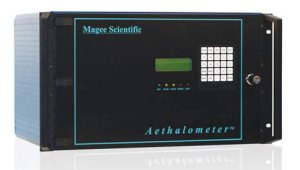Research and Brainstorming
Research and Brainstorming
We know that our senior partner has allergies caused by:
Dust -Dust mites -Vehicle emission -Pollen – Chimney smoke – Industrial pollution
We brainstormed these ideas together as a team to help our senior partner reduce exposure to allergens:
- Purify the pollutants as they are coming out of the pulp mill with air purifiers and scrubbers.
- Make a special dome that goes over the pulp mill that has trees in it so the trees can clean the air.
- Control the amount of pollutants that come out of the pulp mill by controlling what goes into it.
- Have our senior partner run around in a bubble so he is not exposed to stuff that irritates his allergies.
- Wear a gas mask that filters the air.
- Wear a force field hat/shield that keeps pollutants out. Remote Nanobots that remove pollutants using sensors to detect them.
- Use sensors to monitor air quality, and have this information available real time to our senior partner using an app or a watch.
AIR QUALITY
1. The pulp mill puts out tons of pollutants each year.
2. Nephelometer only measure particle size of 2.5 and smaller.
3. Aethalometer is a sensor that measures carbon to differentiate particles like smoke from diesel.
4. SO2 is a colorless gas with a pungent odor. That is what makes the smog from the mill stink.
5. The mill is powered with coal or oil.
6. NO2 is a colorless gas and it makes smog and acid rain. It also is harmful to the lungs and increases asthma.
So what are nanobots?
- Nanobots are microscopic man-made robots.
- Nanobots are made of atoms and molecules.
- Nanobots might communicate using accoustic signals.
- Nanobots can be tracked using jellyfish phosphorescence.
- Nanobots will affect many fields like Medical, Industrial, and Military.
- All funding for nanobot self reproduction has been withdrawn for obvious reasons: The self destruction of mankind.
Reality Check
In our research we discovered that nanobots don’t really exist yet. Scientists are experimenting with the concept. They are expecting them to be useful in 10 to 20 years. The closest example of a Nanobot scientists have been able to make is a business card where atoms are lined up in rows to spell “IBM“.
Air Quality Now: Indoors
- In houses, we have managed our air for a long time.
- Cities even have codes to vacuum stale air out of houses.
- Our senior partner uses a HEPA air filter to clean the air in his house.
- House hold vacuum cleaners also use HEPA filters.
- Exhaust fans remove air from houses while cooking, showering and cleaning.
- Of all the solutions to keeping indoor air fresh, I have saved the easiest, the most pleasant, and the most
beautiful way to filter air for last: Indoor PLANTS!!!!
Air Quality Now: Outdoors
Outdoor air quality is another story. It is harder to control air quality outdoors. We have ways to measure pollution, but cleaning it can be expensive and difficult.
- One of the ways to measure pollution is with a Nephelometer. A Nephelometer measures the particle size of pollutants. PM 2.5 microns and smaller is the standard measurement across the country. These microscopic particles are dangerous because they can reach the lungs.
- Another way to measure air quality is with a Aethalometer. Aethalometers measure black carbon particles such as diesel exhaust and house wood smoke. Washington State department of Ecology has two Aethalometers that it loans out to communities to test for air quality issues.

Port Townsend has only a Nephelometer in the middle of town. Port Townsend also has another set of important sensors. The weather station in Port Townsend is on the clock tower. It measures wind, rain and air pressure.

Leave a comment